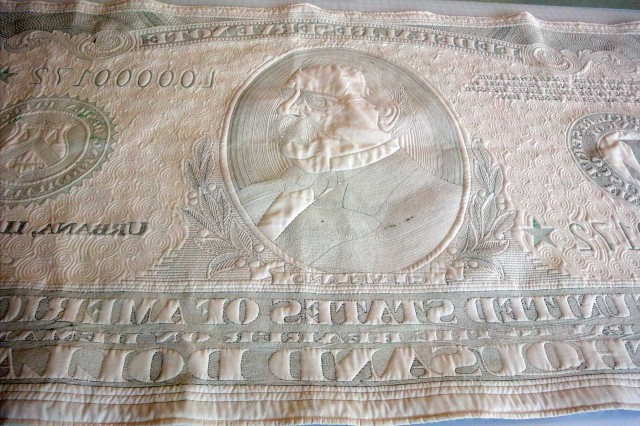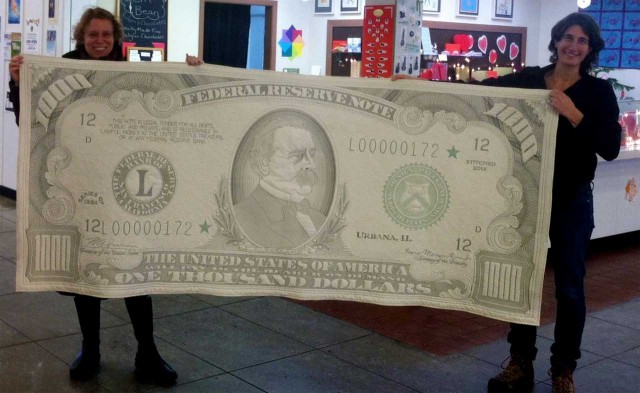The world needs open source embroidery software.
Direct Kickstarter link here.
Some of EmbroiderModder 2’s kickstarter rewards include designs and stitched pieces by me.
Animator. Director. Artist. Scapegoat.
The world needs open source embroidery software.
Direct Kickstarter link here.
Some of EmbroiderModder 2’s kickstarter rewards include designs and stitched pieces by me.
A friend recently refinished my Singer parlor cabinet (pix later) and asked to be paid in quilt. He’s a fish scientist, so naturally he wanted a fish quilt.
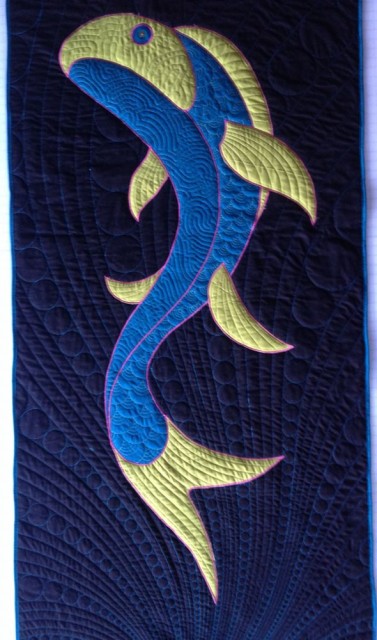 It’s a little over 6′ by 3′ – I haven’t measured it actually. Also the photos are all a bit distorted because I couldn’t shoot it straight on. Instead these are all taken of it lying on my cutting table.
It’s a little over 6′ by 3′ – I haven’t measured it actually. Also the photos are all a bit distorted because I couldn’t shoot it straight on. Instead these are all taken of it lying on my cutting table.
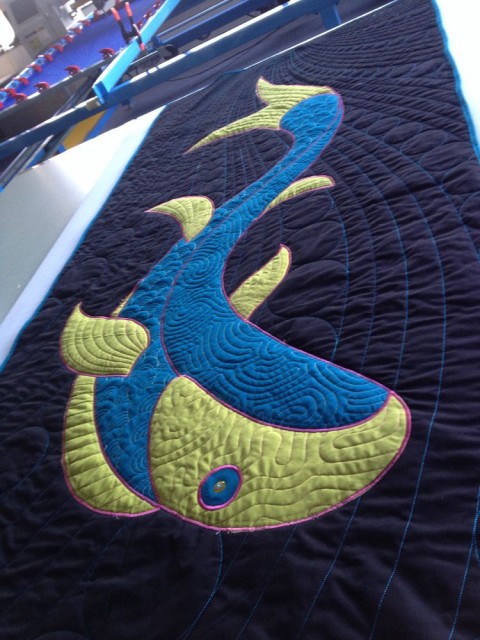 The technique is Trapplique. The parts were stitched on the quilt plotter. I cut them out, then basted and satin stitched them down with my sailmaking machine.
The technique is Trapplique. The parts were stitched on the quilt plotter. I cut them out, then basted and satin stitched them down with my sailmaking machine.
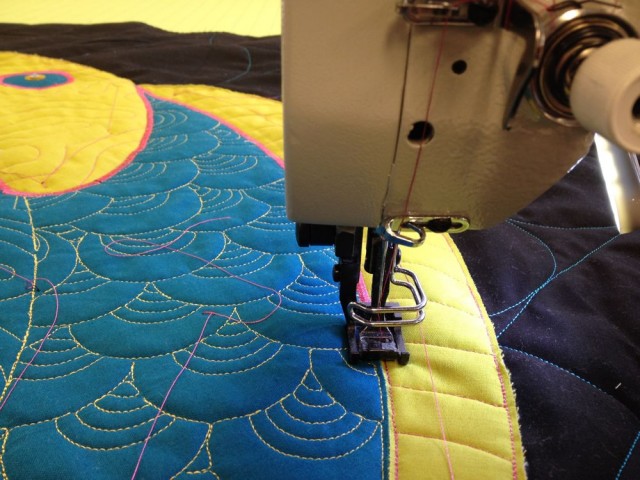 It has a sequined and beaded eye.
It has a sequined and beaded eye.
The quilt above belongs to Niels the fish scientist, but the most efficient use of materials with this design was to make 2 fish’s worth of trapplique parts in one stitching. So I assembled a mirror image fish for myself:
I stitched the binding on my Davis Vertical Feed, best binding machine ever.
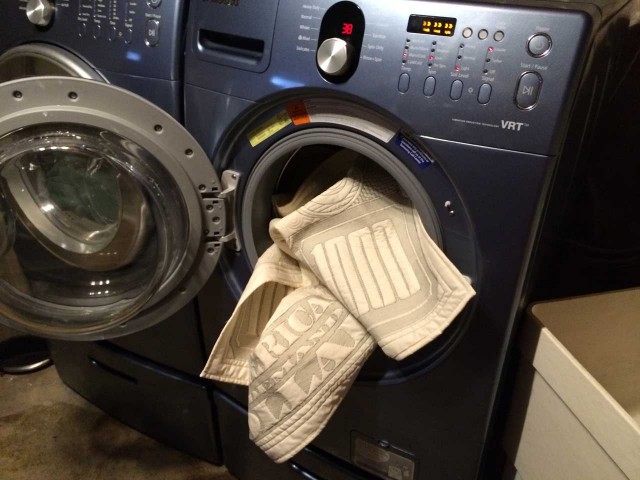 Theo machine-washed and dried our Thousand Dollar Quilt.
Theo machine-washed and dried our Thousand Dollar Quilt.
As is always the way with money, there was a little less of it than before.
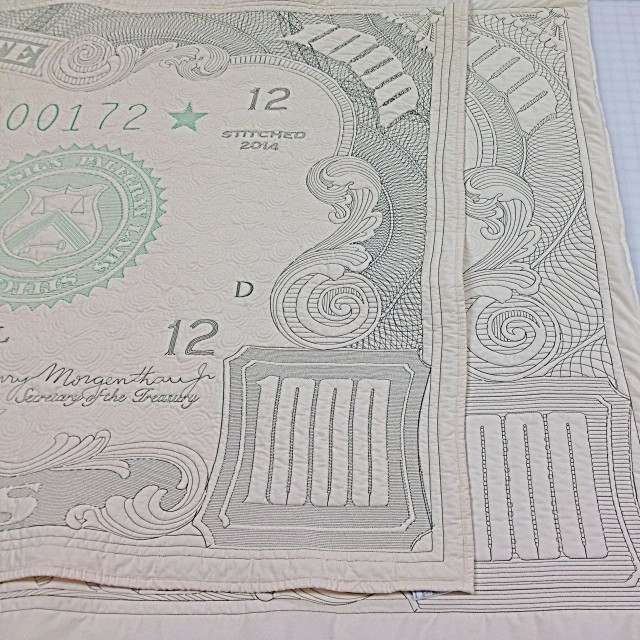
The 98-inch-long quilt shrank about 5 inches (approximately 5%). Shown above against our other $1,000 quilt test, pre-laundered, for comparison. Theo prefers the soft crinkly-ness the laundering imparts. I like them either way.
This is a TEST of the One Thousand Dollar Quilt, conceived as a more affordable version of my handmade Ten Thousand Dollar Quilt.
This is a test, it is only a test. We stitched out two versions to see how the quilt plotter would handle it, how the thread density would look, etc. There’s well over half a million stitches here, and it took the plotter about a day to stitch. Then I spent half a day cutting, sewing, and ironing binding, and binding it.
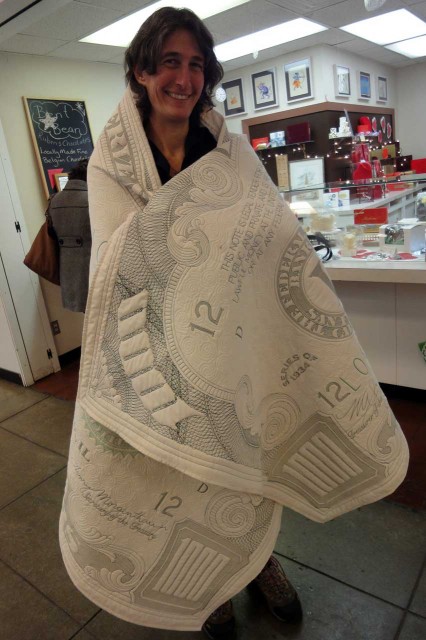
It’s about 8 feet long. The front is high thread count unbleached cotton muslin, the back is regular thread count same. The batting is a mystery – either polyester or poly-cotton, not sure because it’s left over from another project Theo bought it for, and he doesn’t remember. The quilt is remarkably soft and flexible given all the dense stitching
Unlike the Ten Thousand Dollar Quilt, which uses reverse applique, this gets its color solely from the thread. The result is lower contrast, but I like all the stitch lines. Also there’s no way I could do a reverse applique version for under a thousand dollars.
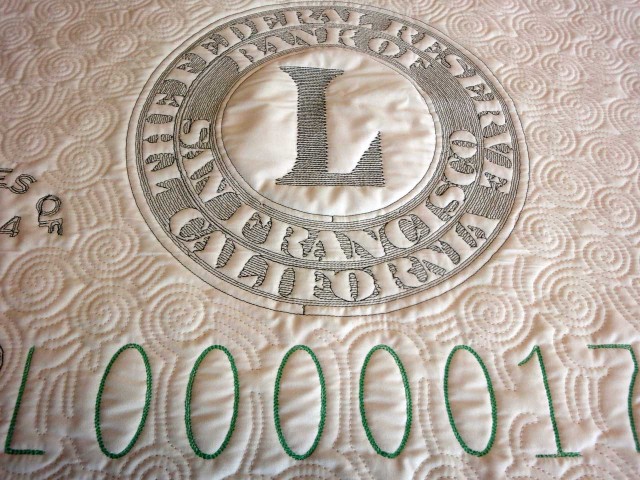
The thread is polyester: the dark green and white are 40 weight, and the lighter green is 30 weight, which is significantly thicker. We may do another test using 30 weight dark green. Heavy thread works beautifully, but it’s very expensive. Then again for a Thousand Dollars we can use expensive thread.
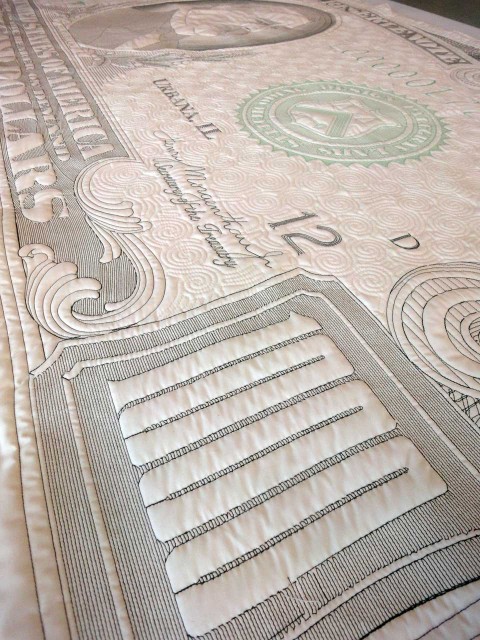
Registration is off as expected, but could be worse. He have a strategy for improving registration in the next test.
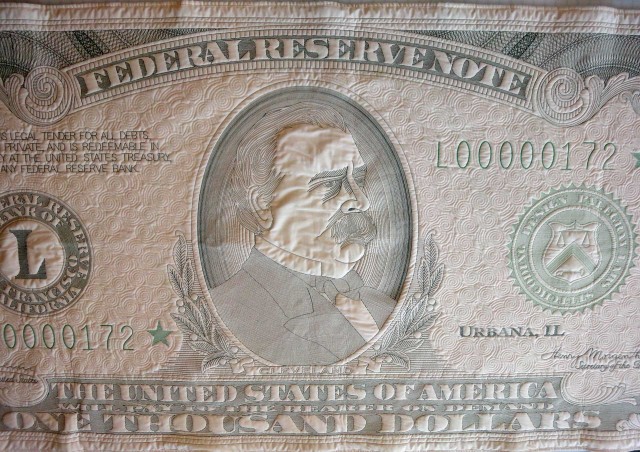
The portrait medallion fill will be crosshatched in the next version. I didn’t like these curved shading lines at all, because the machine double-stitched some of them which ruined the gradient effect. The next version will also have fill lines on Cleveland’s face, along with a larger border with more of the swirly fill.
